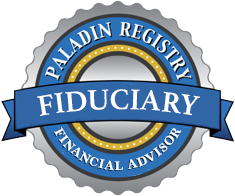Own bonds? Understand duration
- by Glenn Wessel, CFA, CPA, CFP®
Novice investors typically perceive risk in fairly nebulous terms such as the possibility of losing money. However, professional investors tend to evaluate risk in terms of a variety of specific risk elements. As an example, when judging the merits of a given bond issue, a portfolio manager might assess that issue’s interest rate risk (the degree to which a change in interest rates might trigger a change in the bonds’ market value), default risk (the risk that the issuer may default on its payments), call risk (the risk that the issuer will redeem the bonds early), and reinvestment rate risk (the risk that incoming cash flows might have to be reinvested at unfavorably low rates). For now, let’s look more closely at interest rate risk.
Rising interest rates tend to cause bond prices to fall, and vice-versa. Therefore, interest rates and bond prices are said to be inversely related. Why? Assume you purchase a $1,000 bond that is scheduled to pay 3.5% ($35) in interest every six months for 20 years, $1,000 at maturity, and that shortly after you buy this bond, interest rates rise 1%. Since you would now be holding a bond with an inferior yield, selling it prior to maturity would mean that you’d have to offer it at a discount to entice another investor to buy it.
Knowing that interest rates and bond prices are inversely related, you can surmise that an increase in interest rates will cause the market value of your bond to decrease, but the bigger question is, “by how much?” Fortunately, the relationship between the changes in interest rates and bond prices can be, for the most part, captured mathematically in a descriptive statistic known as “duration.”
Here’s what you need to know. All else being equal, the higher a bond or bond fund’s duration, the more sensitive its market price will be to a given change in the level of interest rates. For instance, a bond or fund with a duration of 3 (interpreted as 3 years) will fall in value by approximately 3% for every 1% rise in interest rates and rise in value by about 3% for every 1% decline in interest rates. In contrast an instrument with a duration of 30 years can be expected to change in value by about 30% for each 1% change in interest rates!
The lesson: An instrument with low risk in one category can be absolutely loaded with risk in another category. To get a handle on interest rate risk, ask about duration before you write that check.
Glenn Wessel has an investment counsel and financial planning practice in downtown Asheville. He has been admitted to the Paladin Registry as an elite financial advisor.



